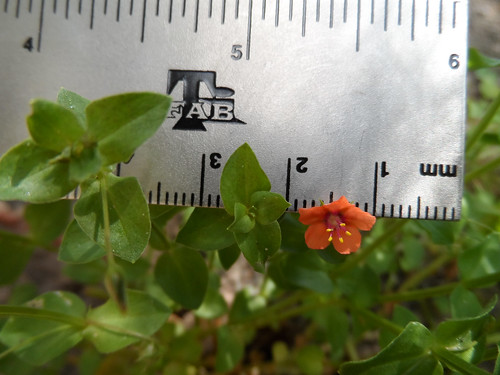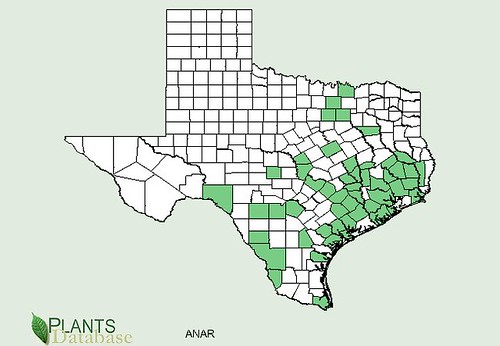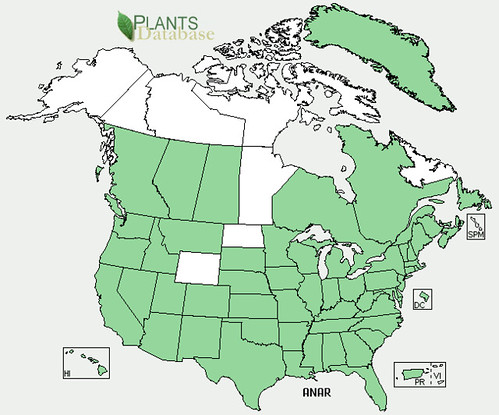Abundance: common
What: flowers, leaves, stem
How: dried and powdered, tea
Where: sunny fields, yards,
When: spring, summer
Nutritional Value: medicinal
Dangers: contains small amount of saponins which can cause stomach upset. Some people develop skin rashes from contact. It also contains some estrogen mimics.
Medicinal Summary:
Leaves/Stem/Flowers - antimicrobial; anti-inflammatory; anti-fungal; appetite stimulant (tisane)
Pimpernel before producing flowers.

Scarlet pimpernel (Anagallis arvensis) plants. Note the square stems. Flowers are only 1/4 inch across.

Close-up of scarlet pimpernel flower.


Scarlet pimpernel, blue variety (Anagallis arvensis Forma azurea).

Close-up of pimpernel leaf.

Texas distribution, attributed to U. S. Department of Agriculture. The marked counties are guidelines only. Plants may appear in other counties, especially if used in landscaping.

North American distribution, attributed to U. S. Department of Agriculture.

The scarlet pimpernel has a tradition of medicinal use going back to the ancient Greeks. They considered it to be a "cure-all", capable of treating any sort of injury, illness, or infection of bone, muscle, eye or other organ. The plant was dried and powdered, this powder then consumed in a drink. The raw plant has a rather unpleasant taste, probably due to the small amount of bitter saponin compounds it contains. It was also used as a wash for bad skin. Perhaps more importantly the pimpernel was thought to raise spirits and dispel melancholy, for which tea made from the fresh plant was recommended.
The pimpernel flowers close up when rain approaches, allowing them to be used as a crude method of predicting bad weather. The flowers also close up in the evening and won't reopen until stuck by sunlight.
The young leaves can be eaten raw or cooked, but generally they are too bitter. Also note that they can be fatal to small animals such as rabbits and rodents so don't feed them to pets. Also, don't mistake it for chickweed (Stellaria media)
Pimpernel contains an estrogen mimic and so if that sort of thing concerns you then avoid this plant. The estrogen mimic can cause problems during pregnancy as well with certain hormone-sensitive issues. These include cancers of the breast, uterus, and ovaries along with endometriosis.
Buy my book! Outdoor Adventure Guides Foraging covers 70 of North America's tastiest and easy to find wild edibles shown with the same big pictures as here on the Foraging Texas website.

